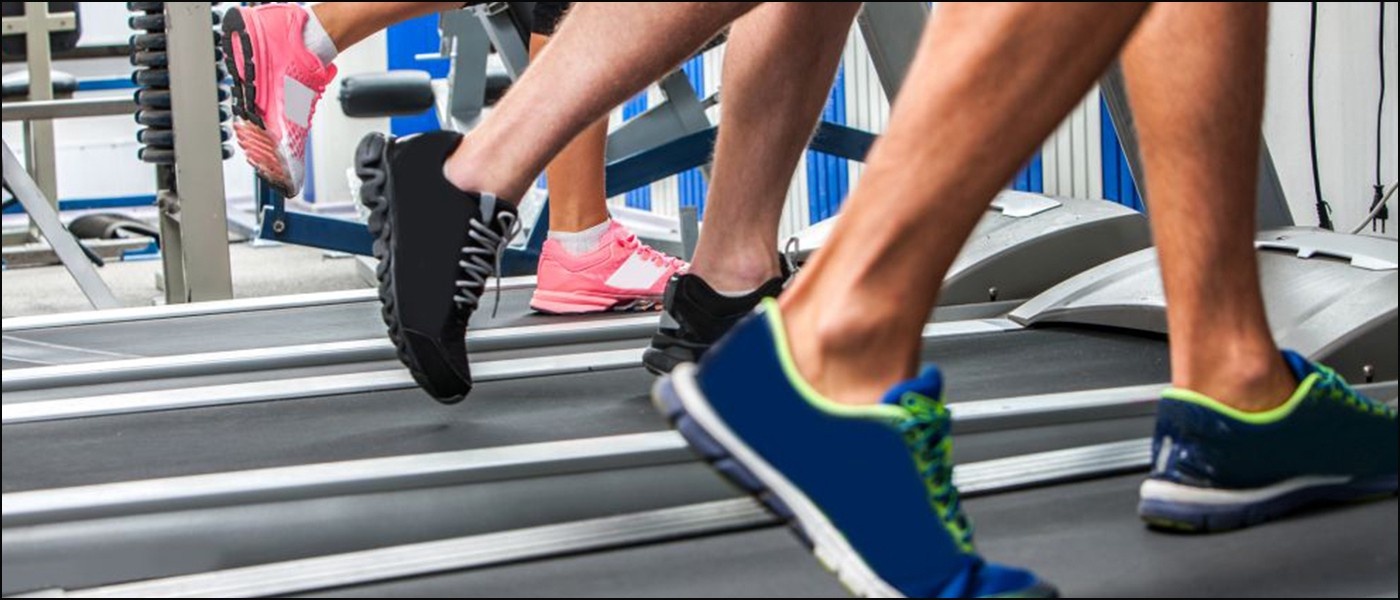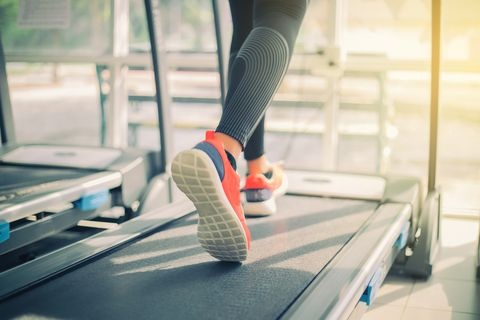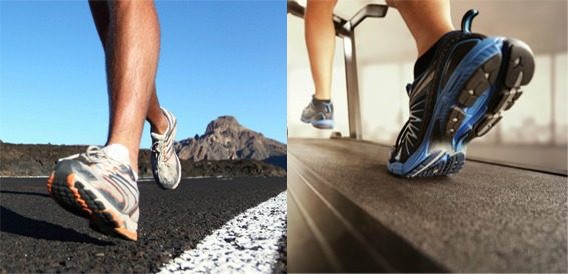Ultimately, there is no right or wrong answer to the debate over treadmills vs. outside running. Both methodologies have their pros and cons based on your individual training needs and goals.
The Power of Perceived Effort
Athletes can get the same workout whether running on a treadmill or outside as long as they maintain the same effort level. But "effort," in and of itself, is a highly variable measure.
Clinically speaking, effort is based not only on your heart rate but a phenomenon known as perceived exertion. Perceived exertion refers specifically to how "hard" you consider an activity to be, irrespective of how your body responds to that activity.

For example, the perceived exertion of running indoors will generally be less than running outdoors on a rainy day even if you burn more calories or have a faster heart rate. On a sunny day, the very act of running up a hill may be perceived to be "harder" than running at the same incline and distance on a treadmill.
Perceived exertion matters because we tend to give up sooner if something is perceived to be difficult. This psychological component can influence how much we get out of one exercise compared to the next.

However, if assessing the real, rather than perceived, benefits of running, outdoor running will usually come out on top. Even if you run at the same pace on a treadmill, you will generally expend more energy running outdoors. This is not only due to variations in terrain, weather, and wind conditions; the treadmill ultimately does a lot of the work for you by propelling you forward.
To compensate for the difference between treadmill and outdoor running, runners will often increase the incline of the treadmill by anywhere from 1 to 2 percent during training.
Treadmills
Nevertheless, treadmills are one of the most popular pieces of cardiovascular equipment both at home and in gyms, thanks to the many advantages they offer.  According to the U.S. Consumer Product Safety Commission (CPSC), over 50 million Americans use a treadmill each year, an increase of no less than 40 percent from 2000.
According to the U.S. Consumer Product Safety Commission (CPSC), over 50 million Americans use a treadmill each year, an increase of no less than 40 percent from 2000.
Pros of Treadmills
There are no weather and temperature constraints. Running in inclement weather is uncomfortable, even if you dress for it. And it's risky to run on snow and ice. In hot weather, there is a risk of dehydration or heat exhaustion. Inside on a treadmill, you avoid these risks. You also don't have to worry about sunscreen, or about over- or under-dressing and being caught far from home without the right gear.
You can simulate (some) race conditions. If you're training for a hilly marathon, you can run hills on the treadmill even if you don't have access to a training route with hills. Study the course and plan your treadmill hills for the appropriate points. Similarly, if you'll be running a race in weather warmer than where you live, use treadmill runs to get acclimatized to a warm environment. Finally, use treadmill runs to try out race day clothing and make sure it will work for you.
You can control your pace. Outside, it can be difficult to maintain a consistent pace. For this reason, treadmill training can be a good solution if you are coming back from an injury. The treadmill makes it easy to track your mileage and pace. You can also stop anytime you want. But you can also use the treadmill pace to push yourself.

It's convenient. Home treadmills let you run on your own time, even in bad weather, late at night, or when you need to keep an eye on your children.
You can multi-task. On a treadmill, it's safe to use headphones to listen to music or podcasts. You can watch TV or even page through a magazine.
The smooth, cushioned surface is easier on the joints. Treadmills offer better shock absorption than pavement, which means less stress on the ankles and knees. And when you run at an incline on the treadmill, you build strength and endurance like you would running hills outside. But you don't have to run downhill, which can be hard on your body.
You can do it alone and at any hour. Running indoors on a treadmill means you avoid the hazards of running outside. It's also safer than running outside by yourself, without a running partner or group.
Cons of Treadmills
You can still get hurt. While treadmills are considered the safer option by most users, the CPSC reports that there are over 24,000 treadmill-related injuries in the U.S. each year. These include sprains, falls, head injuries,2 and cardiovascular events in people who either ran too fast or pushed too hard.
You can't go downhill. Most treadmills do not have a downward incline feature which you need to strengthen the anterior tibialis muscles at the front of your legs.
You can't make turns. Similarly, there are no turns on a treadmill machine, limiting your ability to improve your lateral agility.
It can be boring. Even with music or TV to keep you company, treadmill running for a long period of time can be tedious.
Outside Running
Whether on a track, trail, or pavement, running outdoors is a popular option, especially for runners training for a road or trail race.
Pros of Outside Running
You don't need a gym membership. Running outside is free and you aren't constricted by a gym's schedule or the availability of machines.
You can continue training even when traveling. Hotels can often suggest nearby routes. Running is a great way to check out a new place.
It provides sport-specific training for road races. By running outdoors, your muscles and joints will be more conditioned to the varied terrain you'll encounter in a race. You'll be better able to adapt to changes in weather and know when to exert extra effort when faced with elevations or known obstacles.
It allows you to enjoy nature and breathe fresh air. Some research has even shown that exercise is more enjoyable when it's done outside.
It can be motivating to complete a distance goal outside. Even if you're not motivated, you still have to complete your route to get home.
It builds your bones. Weight-bearing, high-impact exercise like running builds bone mineral density, a measure of how strong bones are. One small study showed it to be more effective than cycling and even resistance training.
It burns more calories. Thanks to wind resistance outside, you have to work a little harder to keep up your pace, which means a greater calorie burn.
Cons of Outside Running
There is a risk of injury. According to research from the University of Applied Sciences in the Netherlands, knee injuries are by far the most common, followed by lower leg, foot, and ankle injuries, respectively.
It can be dangerous. In addition to overuse injuries, there are other hazards outside: Falls, cars, cyclists, dogs, and other attackers.
The Verdict
If your sole intention is to meet and maintain your cardiovascular fitness goals, a treadmill may be all that you really need. By pairing the exercise with an accurate pulse monitor, you can push yourself appropriately while keeping well within your maximum heart rate (MHR).
On the other hand, when training for a race event, you will clearly benefit more from running outside. While you can incorporate treadmill running to improve your cardio health, limit it to no more than 40 percent of your overall training.










